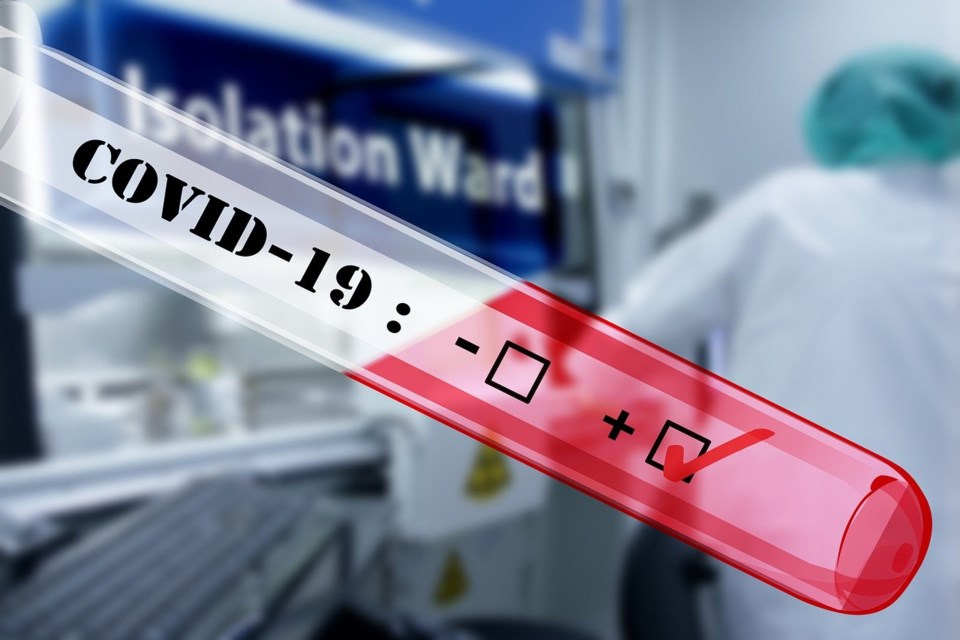Saskatchewan saw its highest COVID-19 new case count on July 22, with 60 new cases.
Premier Scott Moe said, “This is our highest one day total complete. Almost all of new cases are related to an ongoing outbreak in a number of Hutterite communities in southwest and west central Saskatchewan. In fact, nearly three quarters of the new cases today are from one Hutterite community in the RM of Lawtonia.”
Forty-eight of the new cases are from those Hutterite colonies.
He added, “These case numbers are very concerning, but they are not entirely unexpected. This large number of cases was detected as a result of the aggressive testing and the contact tracing that the Saskatchewan Health Authority has been doing in a number of Hutterite communities in the province. And that work is ongoing. So it's possible that we may see similar case numbers in other communities.”
There were 13 people in hospital across the province, with three in intensive care; two in Saskatoon and one in the south. There are 119 active cases in Saskatchewan.
The majority of the cases are in communal living settings, Dr. Saquib Shahab, chief medical officer of Saskatchewan, noted.
There are currently 17 Hutterite communities with active cases in the following Rural Municipalities. They include:
- Auverge (No. 76)
- Biggar (No. 347)
- Carmichael (No. 109)
- Eagle Creek (No. 376)
- Grandview (No. 349)
- Harris (No. 316)
- Kindersley (No. 290)
- Lawtonia (No. 135)
- Maple Creek (No. 111)
- Newcombe (No. 260)
- Perdue (No. 346)
- Pleasant Valley (No. 288)
- Prairiedale (No. 321)
- Saskatchewan Landing (No. 167)
- St. Andrews (No. 287)
- Tramping Lake (No. 380)
- Webb (No. 138)
Moe said, “For the most part we have had very, very good cooperation with the Hutterian Safety Council, with community leaders and residents in following these guidelines and following them very closely. However, there have been a few isolated reports and individuals that have not been following these guidelines and they have traveled outside of their communities for essential reasons.
“So we are in the process of speaking to all the leaders of all of the Hutterite communities where there is a significant number of cases. And we are working with these local leaders to enact restrictions on all non-essential travel in and out of their communities.
“We're working with these local leaders and limiting the essential travel to a small number of designated individuals. This includes travel between Hutterite communities. We know there will still be some travel, that, that will be required. So it's important for all of us in this province to not stigmatize or exclude members of this community or any other community, for that fact.”
He noted he had personally spoken with a number of Hutterite community leaders that morning. The province has offered the assistance of the Public Safety Agency, should that be required.
“They are very understanding of the threat that COVID-19 brings to their community. They are very understanding of the measures that they have taken, and ultimately mean me take to ensure that we can you know contain this virus.”
Some colonies have seen their case number start to drop, and that’s a positive, Moe said.
Active contact tracing has played an important role in tracking down cases.
Shahab said, “The big concern will continue to be settings where there are cases who are not seeking testing and over time you get a large number of cases and hospitalizations, that’s situation. We all need to work towards avoiding whether it's a communal living setting or our own households and communities.”
He said there should be no discrimination against colonies, just as there should be no discrimination against businesses who announce they have had a case. “There should be no discrimination broadly against the Hutterite community or otherwise,” Shahab said.
“Many colonies out of the 17 had only one or two cases because they were quick. Everyone in the family was well aware of the symptoms. They were quick to get testing and isolate themselves,” Shahab said.
“There are now examples that it is impacting the surrounding communities, and it’s no one’s fault.
Shahab stressed the important of not going to weddings or funerals if symptomatic.
Moe said, “Today, we have a higher infection rate in one community than we’ve had on any other day, across the province, with 43.”
“We are asking them to limit all non-essential travel in and out of the colonies, and we know there’s close-knit family relationships between colonies. And in this same way, it has been very challenging for many of us to not see family members in health care settings of long-term care settings.”
Moe added, “If this doesn’t get everyone’s attention across this province, I hope it does.”
Moe credited aggressive testing by the Saskatchewan Health Authority. Shahab said it’s better to have the testing and get ahead of situations.
Shahab said the small communal settings have been an example in microcosm of earlier modelling of “what would happen if business as usual happens.”
“They’ll outbreak quickly in two or three weeks,” he said.
Moe emphasized, “We shouldn’t stigmatize businesses or communities for doing the right thing.”




